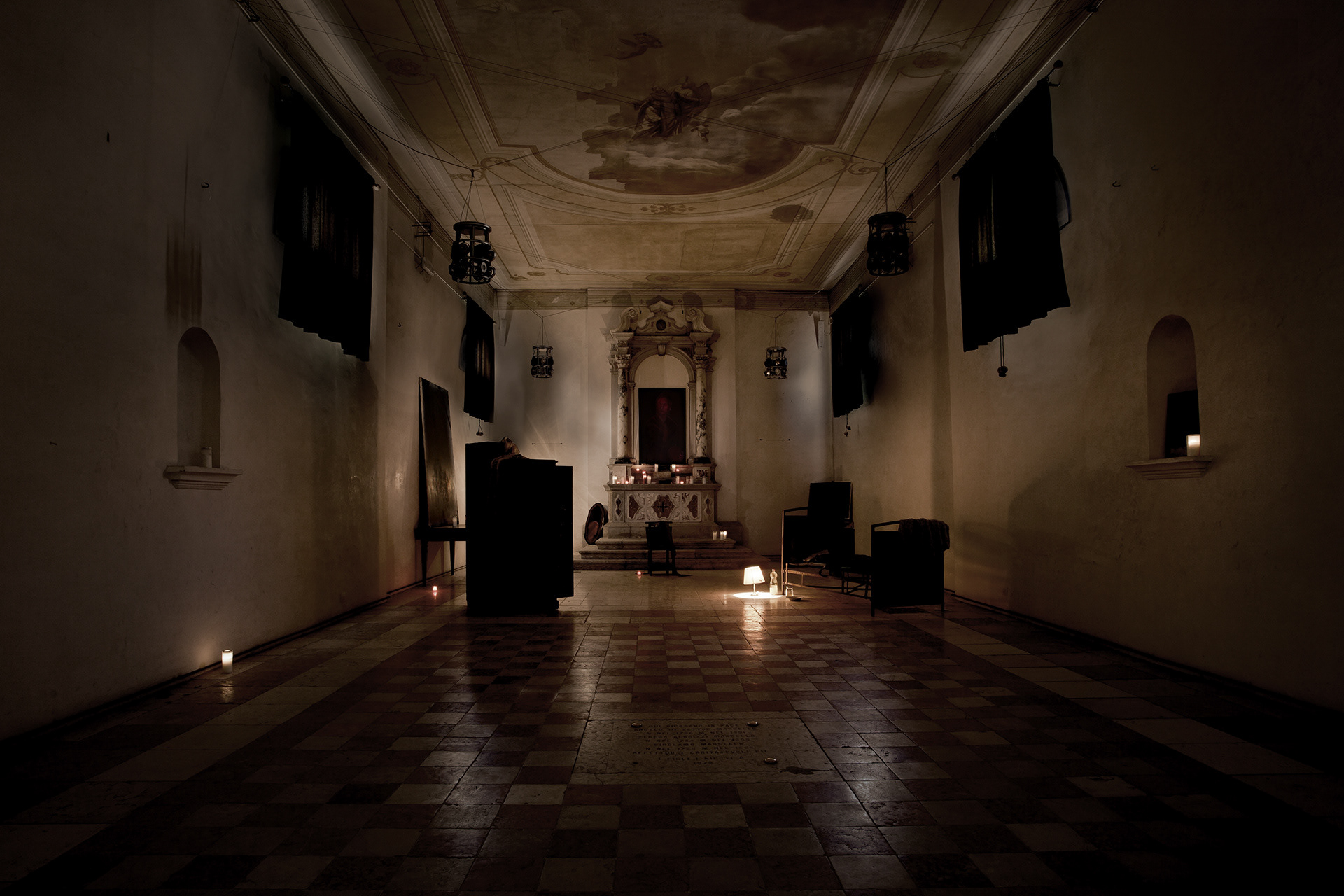
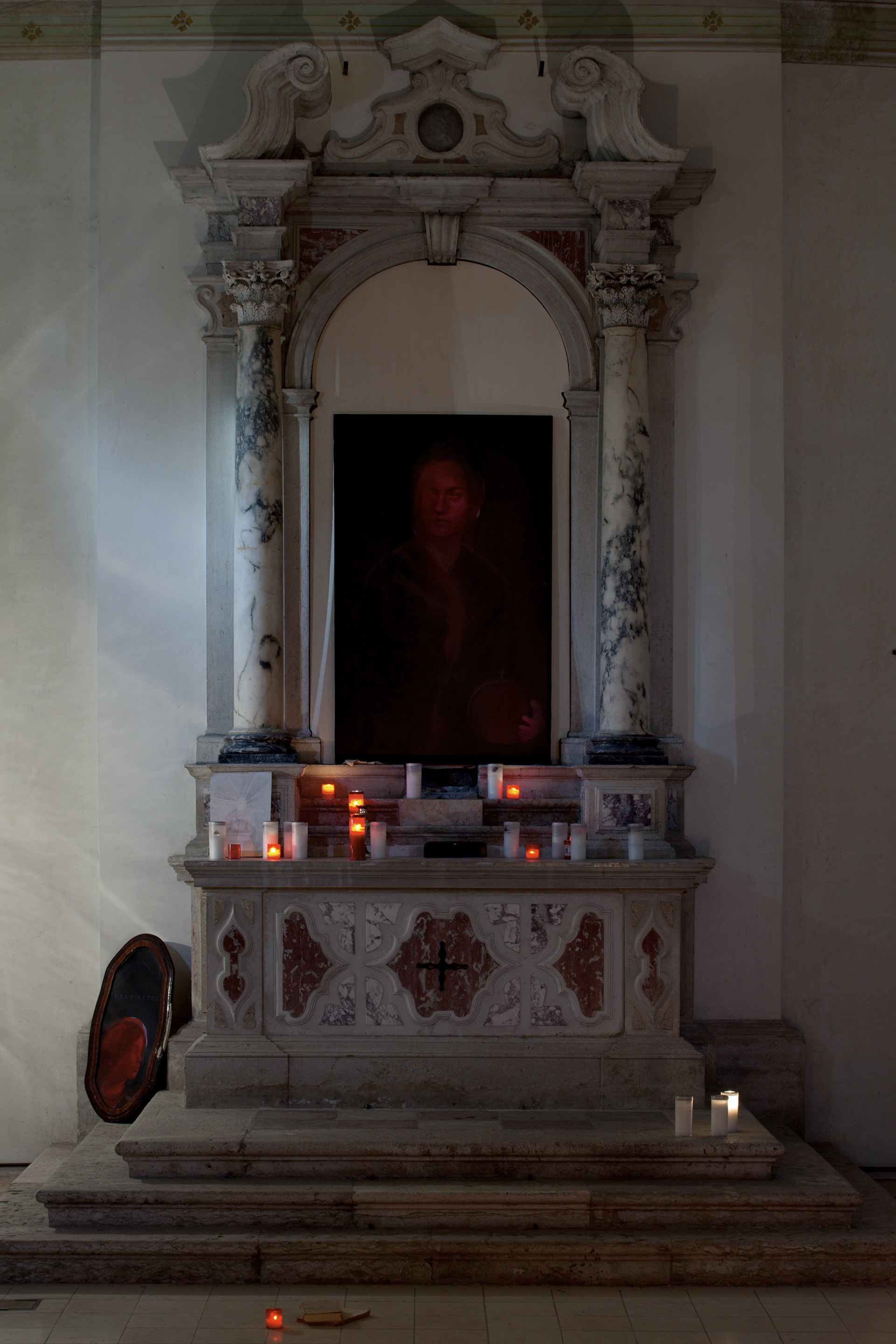
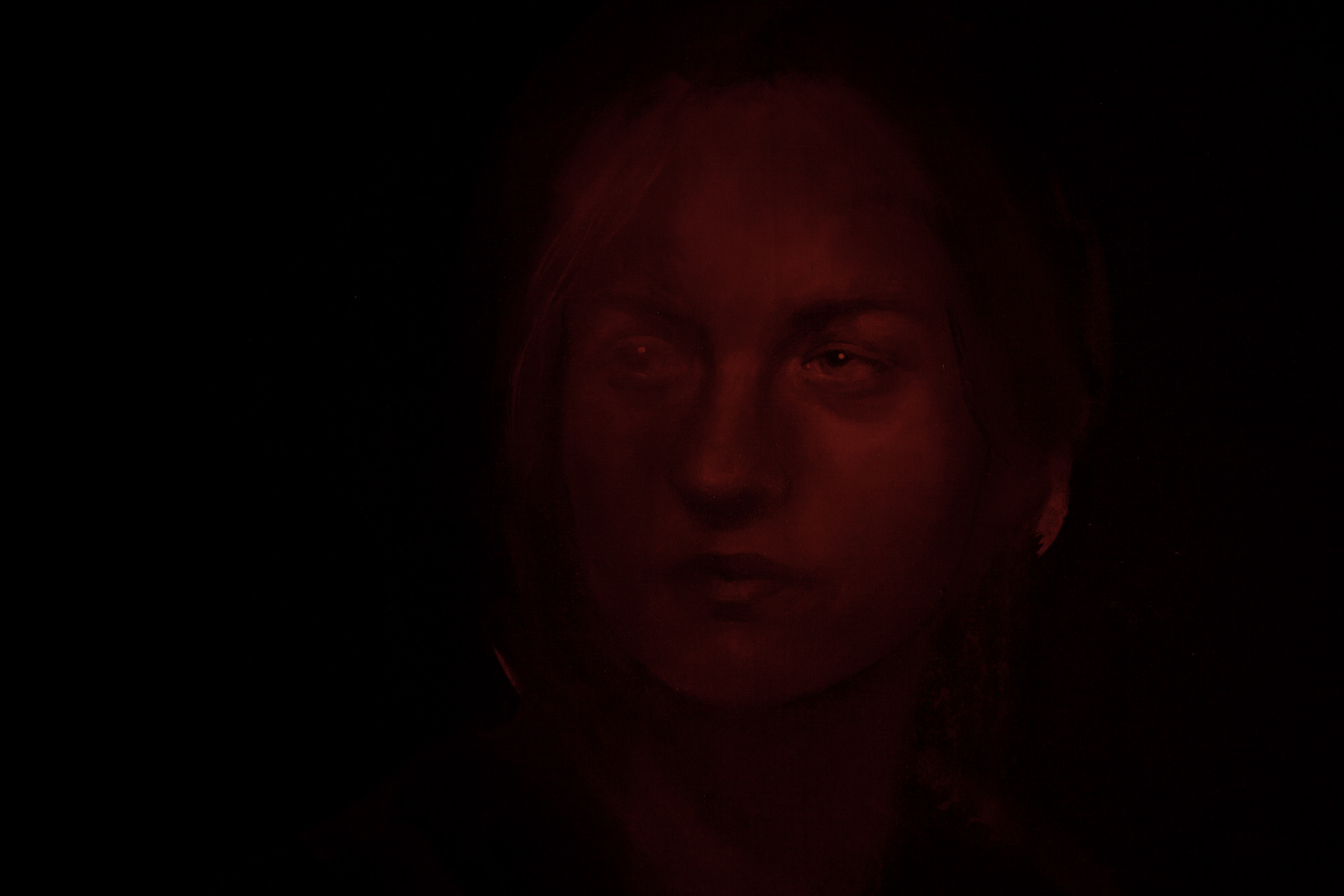
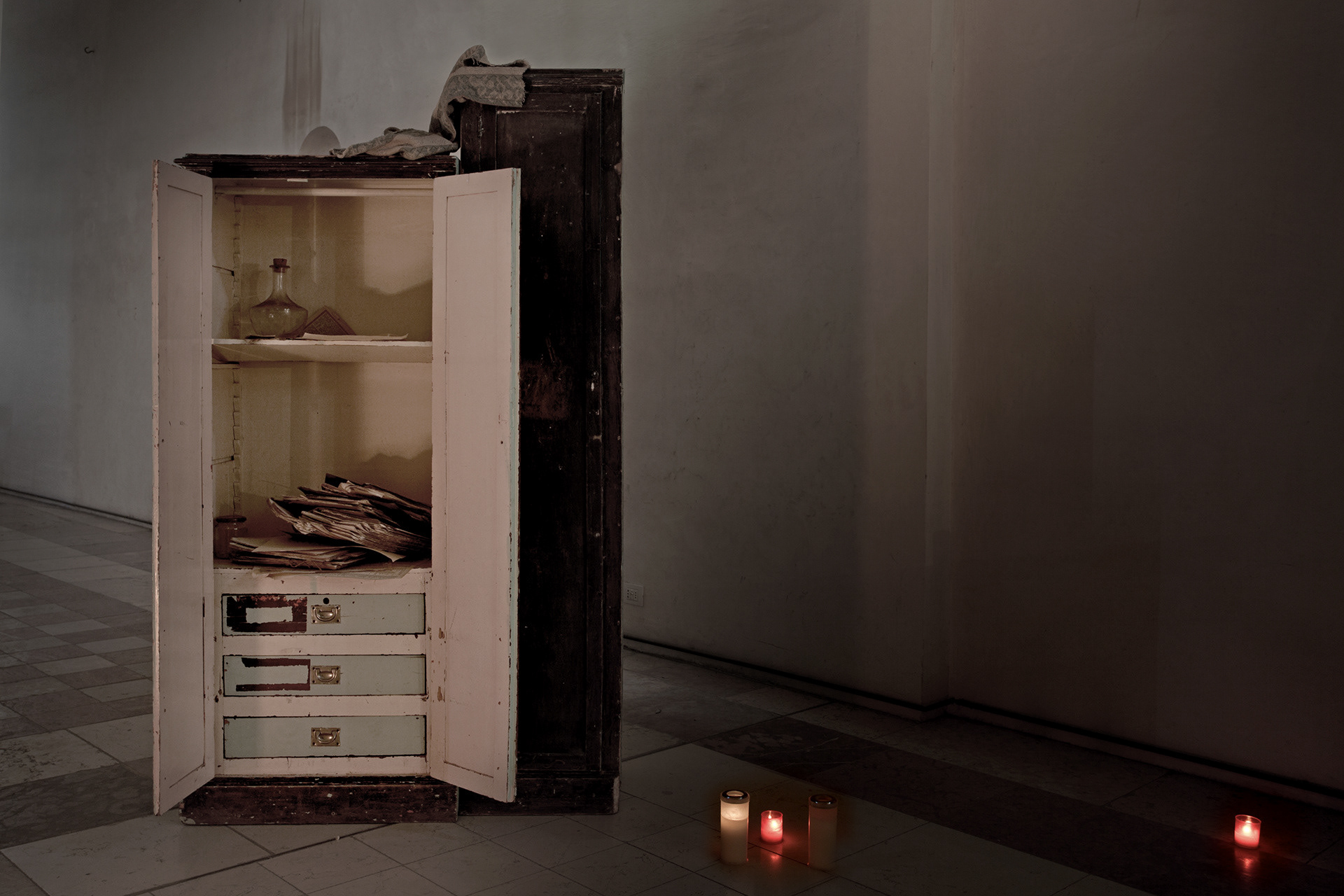
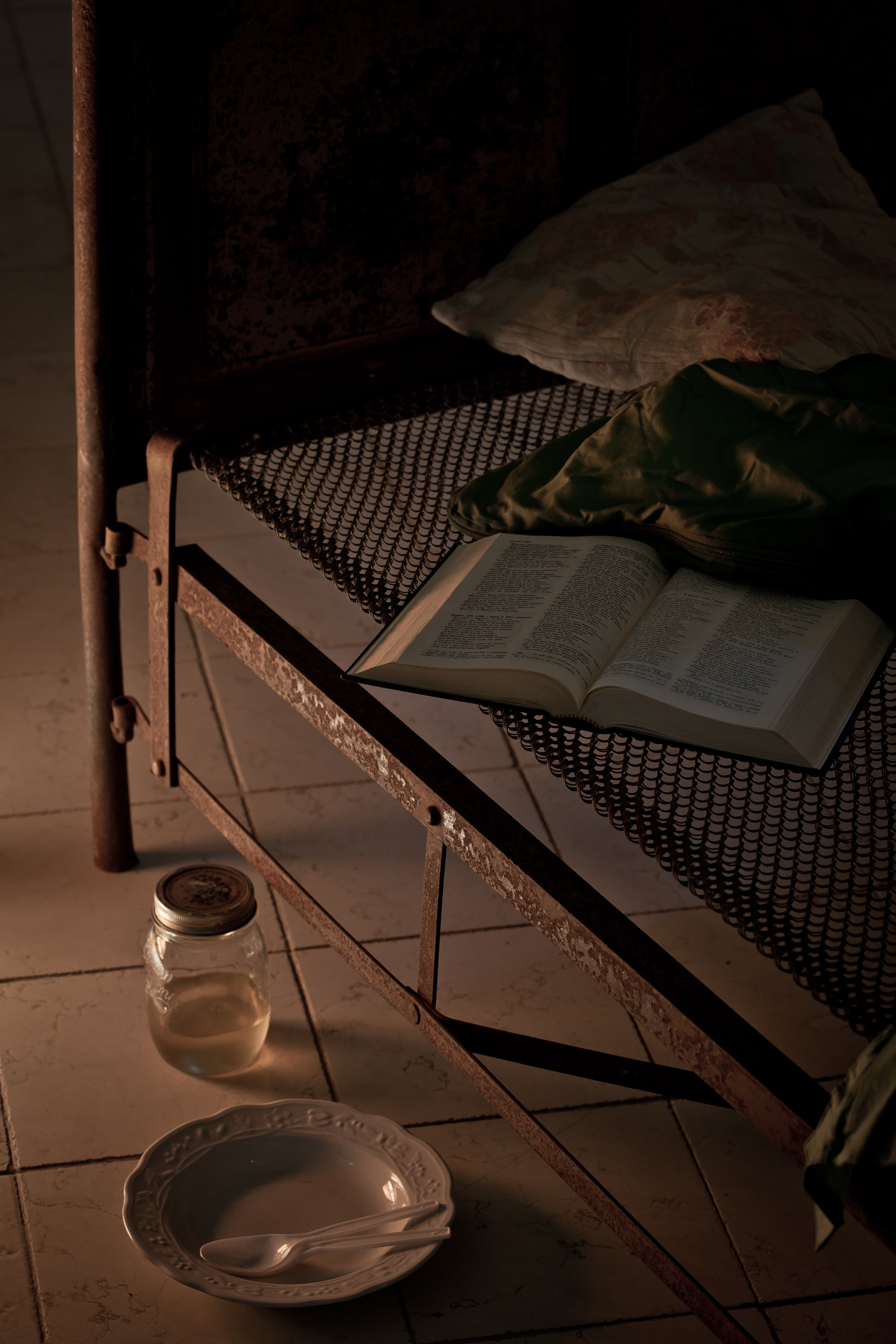
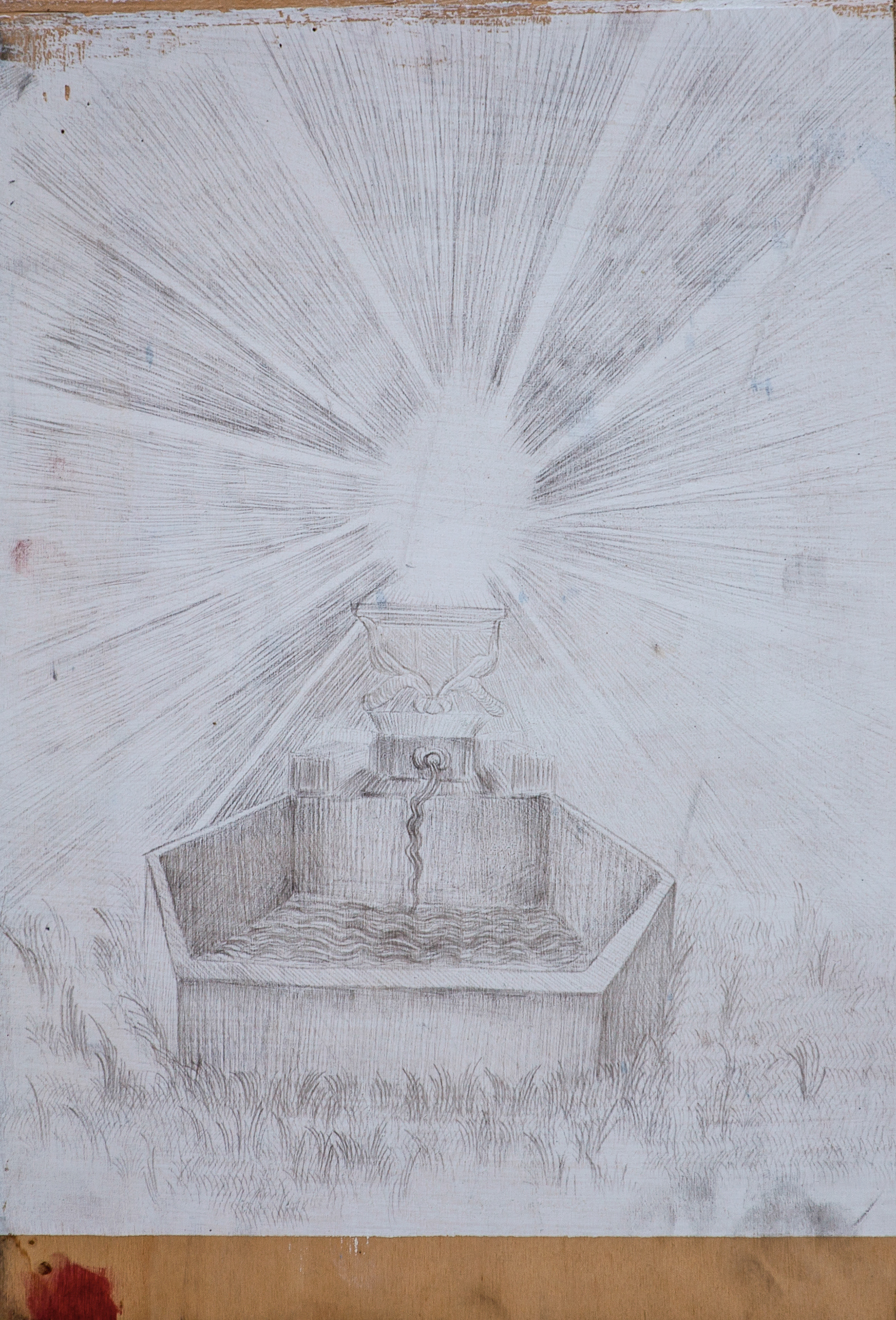
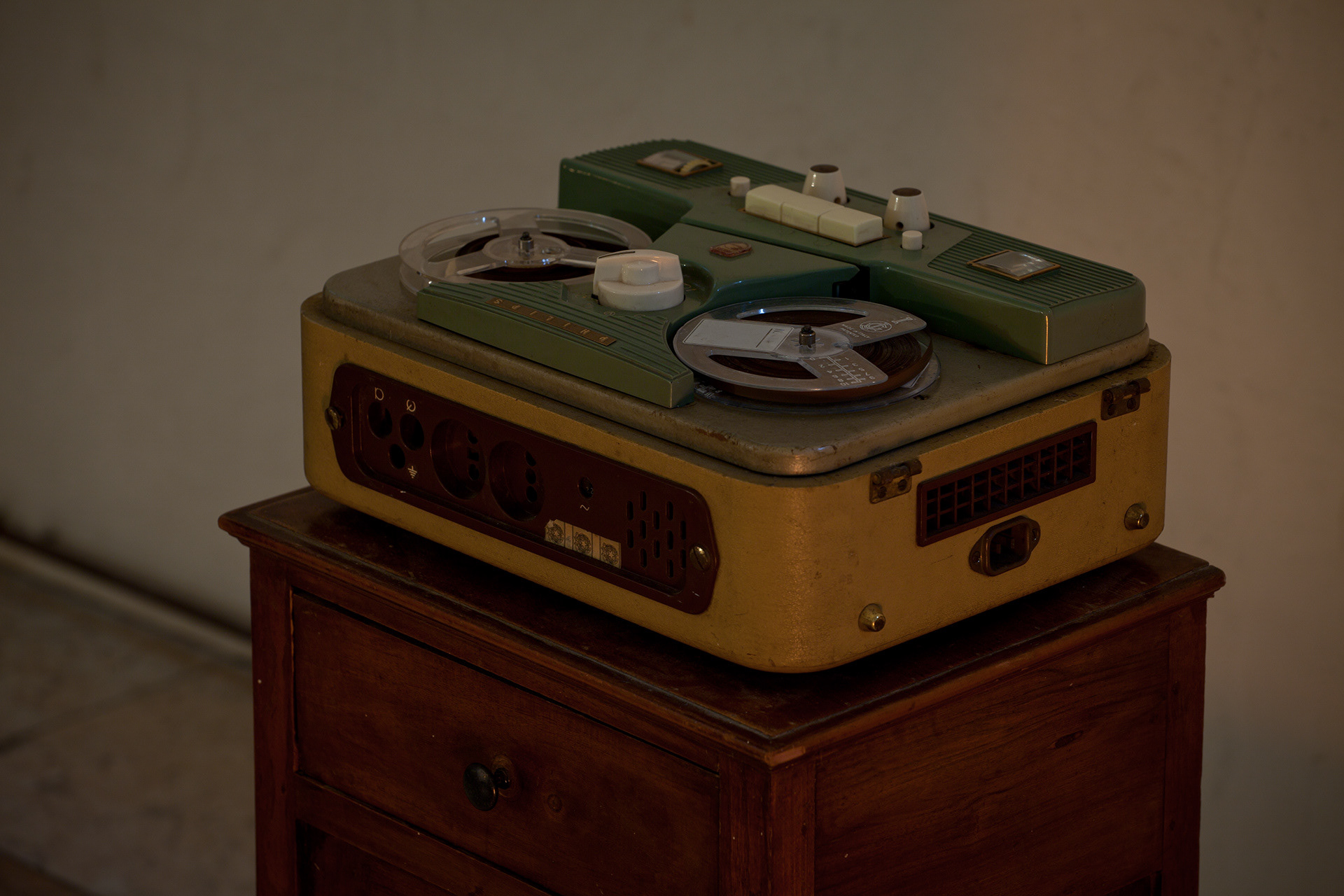
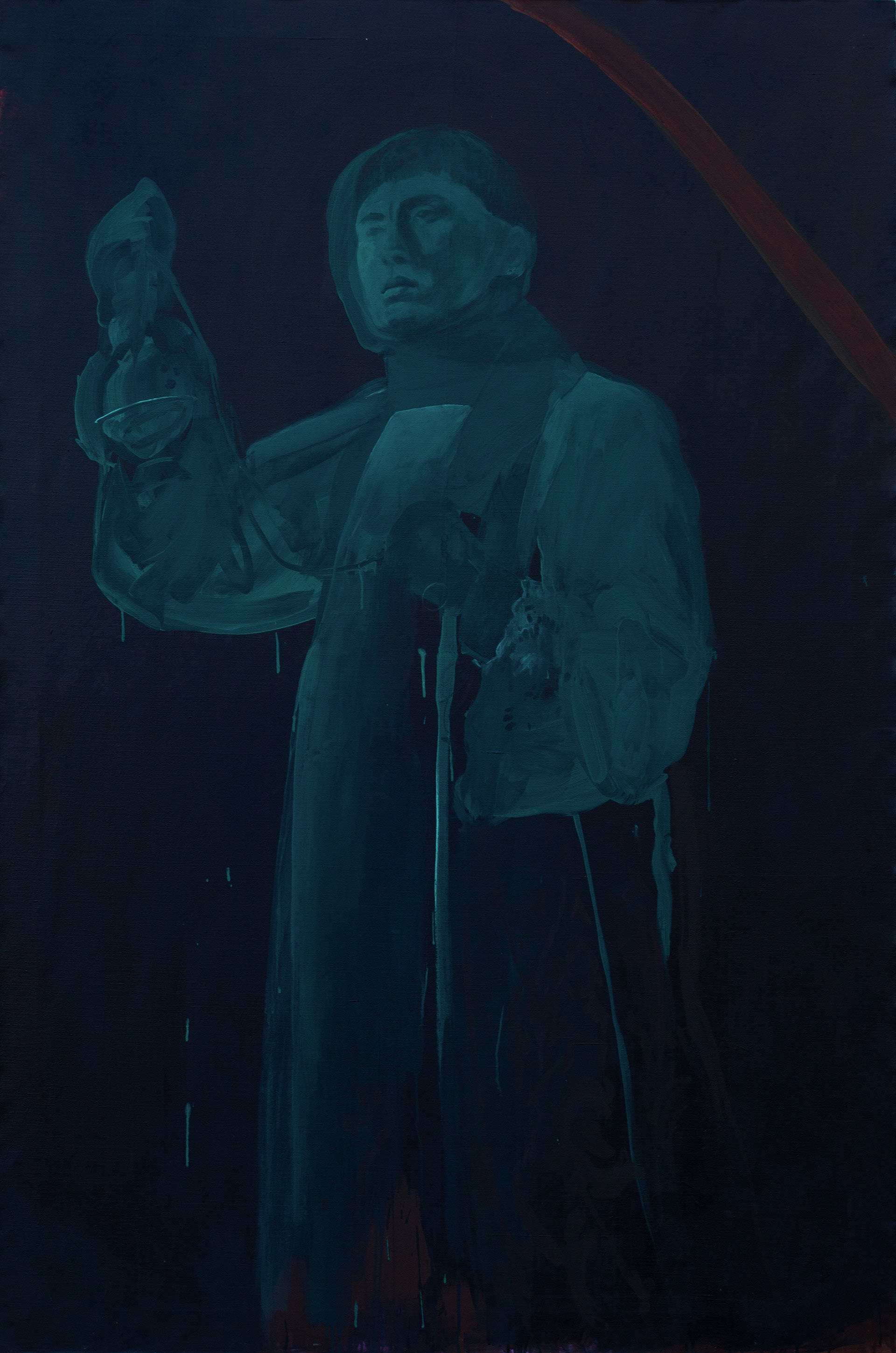
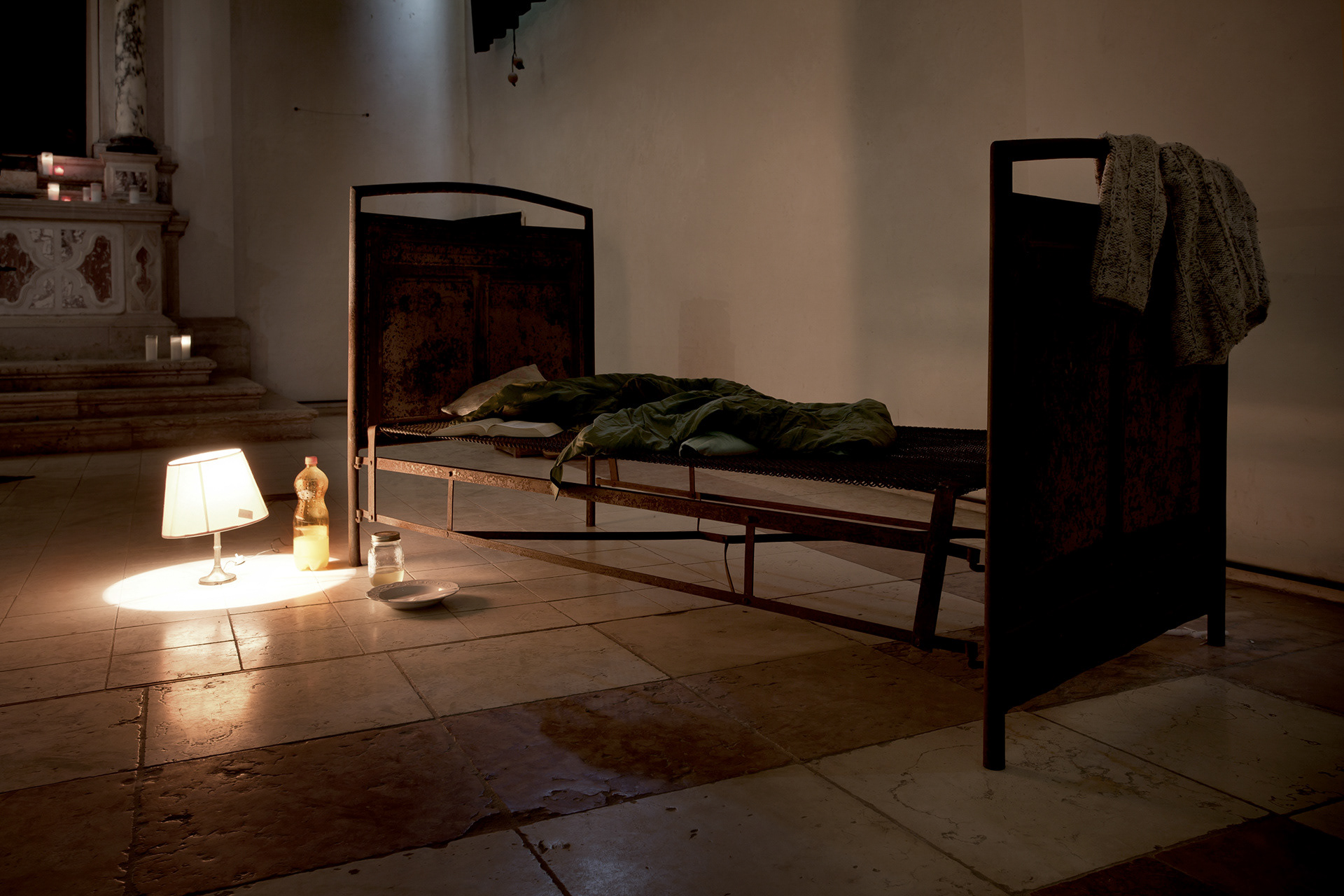
Mixed media, variable materials (oil and acrylic on canvas, silver point on board, 27-minute audio loop, found objects).
Audio production and voice: Oscar De Summa.
This version of the installation was developed for Phada Murgania 2011, held at the former Church of Sant'Antonio in Badoere di Morgano.
The project weaves together local folklore surrounding the legend of Morgana, as recounted in the Hypnerotomachia Poliphili, with the historical story of Lucia Roveri della Mirandola, a woman tried by the Inquisition in Modena, Italy, in the late 18th century. Lucia was at the center of a cult that worshipped her as God the Father, and at the center of a new sacred mystery: according to documents preserved in the Inquisition archives, the cult believed that God had descended to earth in the form of a female “Figure”—not incarnate, but using a kind of illusory female shell—for a new redemption, this time of the flesh, intended to complete the failed and incomplete redemption initiated by the Son, Jesus.
The artwork imagines that a man today is still a believer of this forgotten cult.
He has occupied the old church, where he lives in a sort of hermitage that he has adapted into a place of worship for Lucia/God. This hermit figure is momentarily absent and his presence is evoked primarily through an audio recording in which his voice recites excerpts from the sect’s original writings, interspersed with his own reflections. The recording plays from an old reel-to-reel tape recorder—an homage to Pupi Avati’s The House with the Laughing Windows, specifically echoing the recorded monologue of Buono Legnani in the film—and suggests that the paintings are the work of the hermit himself.
He has occupied the old church, where he lives in a sort of hermitage that he has adapted into a place of worship for Lucia/God. This hermit figure is momentarily absent and his presence is evoked primarily through an audio recording in which his voice recites excerpts from the sect’s original writings, interspersed with his own reflections. The recording plays from an old reel-to-reel tape recorder—an homage to Pupi Avati’s The House with the Laughing Windows, specifically echoing the recorded monologue of Buono Legnani in the film—and suggests that the paintings are the work of the hermit himself.